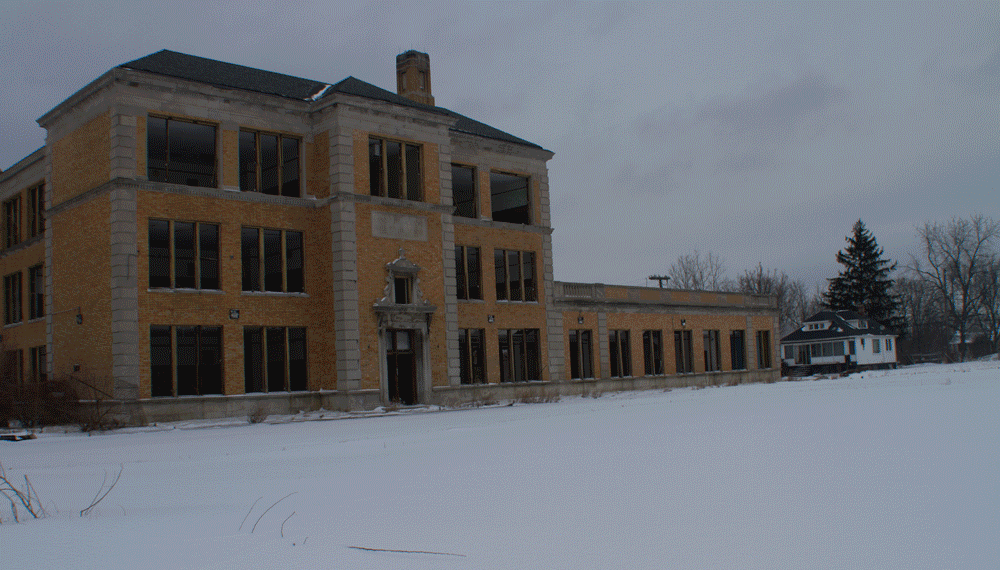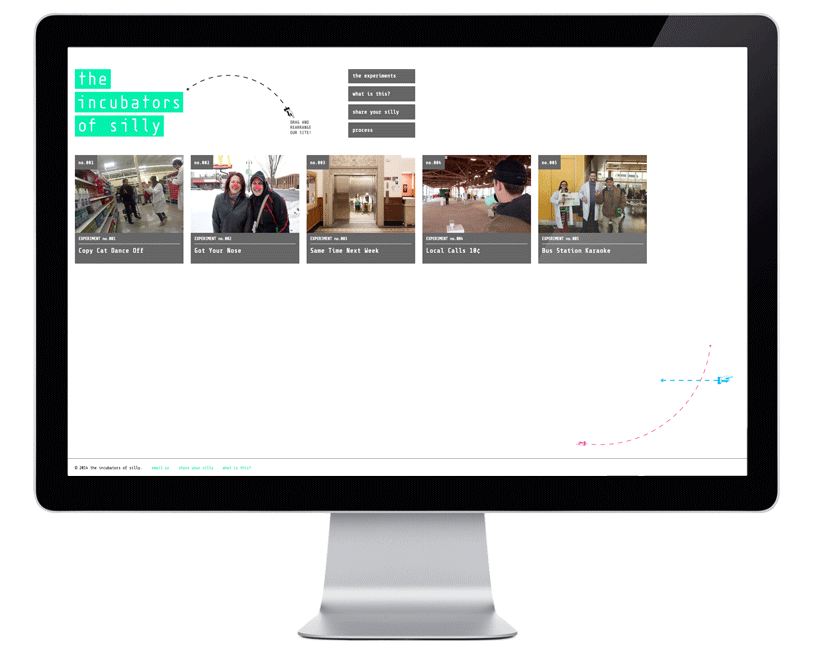Process
Letting chance determine many of our early decisions, we turned an unknown outcome into a project promoting silliness in the city of Detroit.
It all started when Randall Bruder and Angie Foster decided to work together for a semester-long “chance project.” This meant embracing the unknown outcome, and letting the process inform the final form.
Part 01. Research
Part 02. Gather
Part 03. Think
Part 04. Design
Part 05. Experiment
Part 01. Research
After researching five designers and artists, we determined the common thread in their successes was questioning “Why does ____ have to be this way?” Their answers? It doesn’t. This notion has propelled designers throughout history to challenge the status quo to make more functional, meaningful, and simply better things.
back to top
Part 02. Gather
Our next step was choosing 12 locations. Then using chance methods, narrow them down into 4 locations. Document them meticulously without looking through any viewfinders or editing the photos, video, audio, etc. We were fascinated during our research phase with the process of Derive, which is a feeling-based ambling of sorts, where the destination is unknown. After two hours of driving around Detroit, we had our list of 12 locations.
Location 1. Finney High School

Location 2. Hotel Normandie

Location 3. Rosa Parks Transit Center

Location 4. Detroit Public Library, Elisabeth Knapp Branch
Part 03. Think
After a day of mind-mapping and audio recording our brainstorming sessions, we came up with two concepts. The first, questions what it means to be a ‘Detroiter.’ As young, upper-middle class white kids in Detroit, though years have passed and we have lived in the city, we live in a bubble that pretty much exclusively includes New Center, Midtown, the Cass Corridor, and Corktown. What is the criteria for calling oneself a ‘true’ Detroiter? And why is this different from other large cities?
The second concept, that we chose to pursue, is asking “Is there a place for silliness in Detroit.” Our research and observations lead us to believe that Detroit is not inherently silly. We recognize that the research was done in the dead of winter, which is not the ideal time for silliness and playfulness in Michigan. We made lists of the least silly places in Detroit, and devised a set of ‘silly experiments’ to gather and determine if Detroit was open to silliness. In need of some silly personas, we called ourselves The Incubators of Silly. Rescienanthrotologists Ingrid Collins and Dr. Labcoat.

back to top
Part 04. Design
For the brand of our organization, The Incubators of Silly, we merged science and comedy. The result? A website that has re-arrangeable content and alternative silly patterned name-styles.


back to top
Part 05. Experiment
001. Copy Cat Dance Off
Challenge shoppers in Meijer to a ‘copy cat dance off.’ When you move, I move, Jack.
002. Got Your Nose
Photograph pedestrians in Downtown Detroit before and after wearing a red, foam clown nose.
003. Same Time Next Week
Hold mini-therapy sessions inside an elevator in a Wayne State University’s building.
004. Local Calls 10¢
Set up a tin-can phone in Eastern Market.
005. Bus Station Karaoke
Offer free karaoke to waiting bus-station goers at the Rosa Parks Transit Center.
back to top
– – –
We’d like to wish a heartfelt thank you to everyone who participated in our experiments, and helped us along the way. Special thanks to Kevin Knecht, Joe Anstett, Samantha Schaefer, Jared Gentz, and Chris Tumaghap for your documentation assistance, karaoke machine borrowing, and general silliness.





